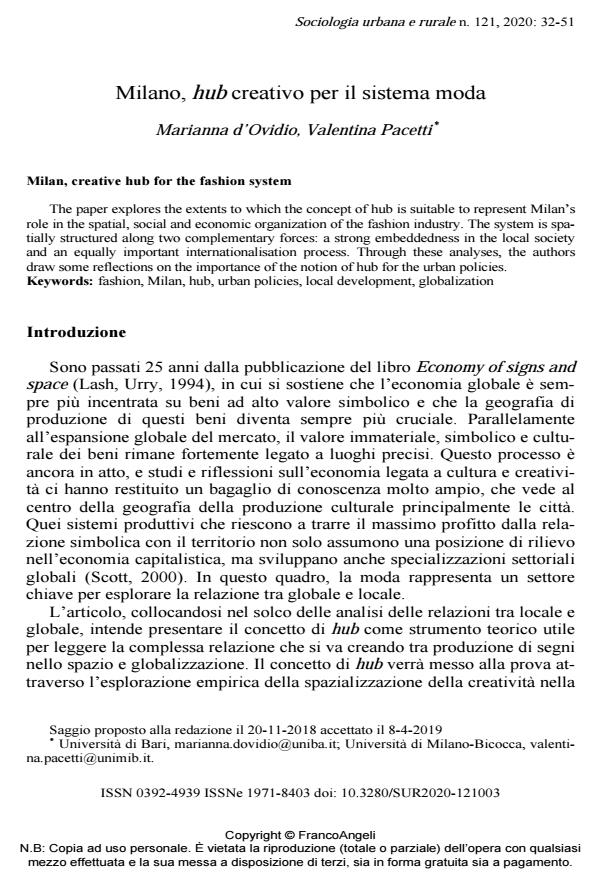Milan, creative hub for the fashion system
Journal title SOCIOLOGIA URBANA E RURALE
Author/s Marianna d’Ovidio, Valentina Pacetti
Publishing Year 2020 Issue 2020/121
Language Italian Pages 20 P. 32-51 File size 257 KB
DOI 10.3280/SUR2020-121003
DOI is like a bar code for intellectual property: to have more infomation
click here
Below, you can see the article first page
If you want to buy this article in PDF format, you can do it, following the instructions to buy download credits

FrancoAngeli is member of Publishers International Linking Association, Inc (PILA), a not-for-profit association which run the CrossRef service enabling links to and from online scholarly content.
The paper explores the extents to which the concept of hub is suitable to represent Milan’s role in the spatial, social and economic organization of the fashion industry. The system is spatially structured along two complementary forces: a strong embeddedness in the local society and an equally important internationalisation process. Through these analyses, the authors draw some reflections on the importance of the notion of hub for the urban policies.
Keywords: Fashion, Milan, hub, urban policies, local development, globalization
- The Art of Taking Space: Interdependencies in the Contemporary Art Ecosystem in Milan, Italy Carlos Manzano, Cecilia Nessi, Marianna d’Ovidio, Marta Bracci, Laura Raccanelli, in Space and Culture 12063312251363055/2025
DOI: 10.1177/12063312251363055 - De Gruyter Handbook of Creative Industries Marianna d’Ovidio, Marc Pradel, pp.135 (ISBN:9783111349299)
Marianna d’Ovidio, Valentina Pacetti, Milano, hub creativo per il sistema moda in "SOCIOLOGIA URBANA E RURALE" 121/2020, pp 32-51, DOI: 10.3280/SUR2020-121003